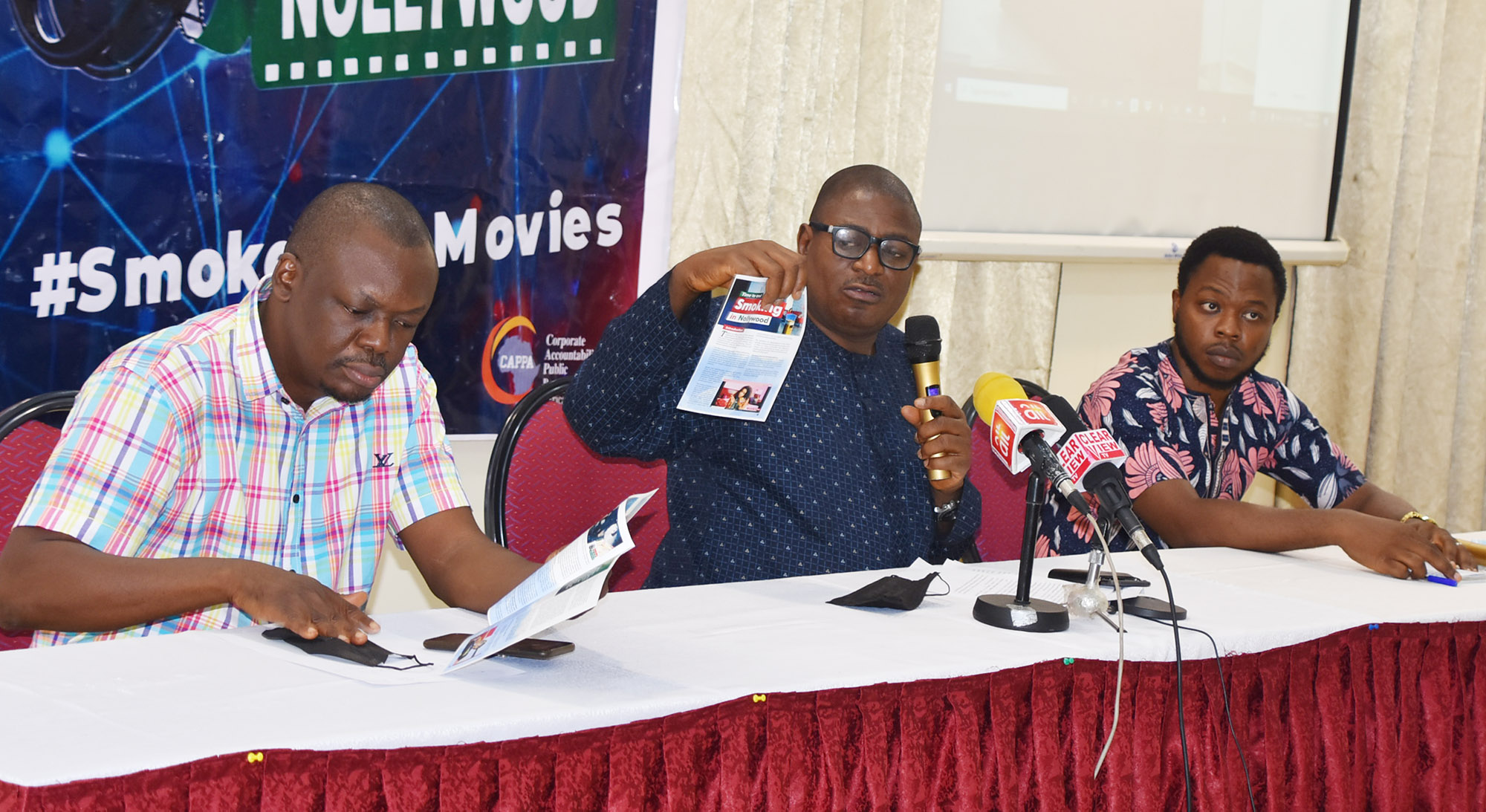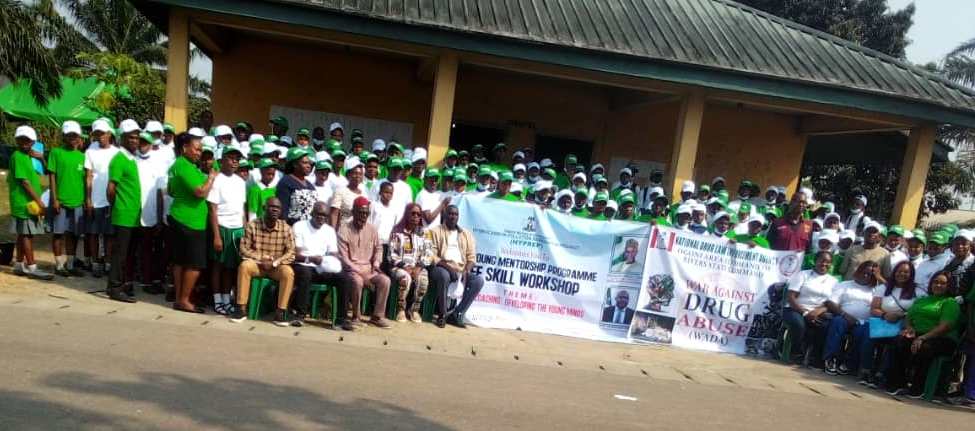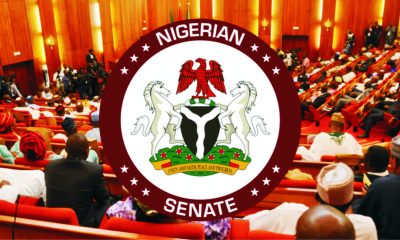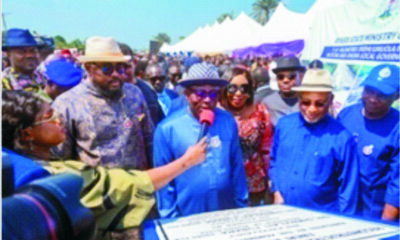Nation
Nigerian Arts, Expression Of Diverse Culture, Tradition And Religion

Arts, according to Merriam Webster Dictionary, means “something that is created with imagination and skill that is beautiful or that expresses important ideas or feelings”. It could also mean methods and skills used for painting, sculpting, drawing etc.
The Oxford Advanced Learner’s Dictionary defines arts as “The use of imagination to express idea or feelings particularly in drawing or sculpture”.
While Njoku Moses of Affinity Art Gallery notes that the story of Art could be simply put as the story of civilisation and evolution of man. Most of the materials and clues employed by ethnographers and anthropologists in constructing the story of the early man are largely based on the artistic objects and instruments left behind by the early man.
In the pre-colonial era almost all over the 250 ethnic groups and languages that make up the entity named Nigeria by the British colonial masters, practised one form of art or the other. Like in most African countries including Nigeria, arts is inseparable from their religion. Arts is seen as the agency through which their religion is given expression.
Prior to the coming of the colonial masters, Nigeria was a melting pot of artistic explorations, Nigerians used their art to interpret their world as they see it as well as concretise saw their cosmological views on life and esoteric ideas. They employed art in the various cultural celebrations and ceremonies because of the pantheist nature of the traditional religion.
The early Nigerian society, produced a large collection of ancestral images and gods, spirit entities, natural elements and, forces such as wind, fire and water and land were given recognition as possessing spiritual authority and required reverence. They therefore made art object to represent the essence and attributes of these supposed forces. This they did with the hope of subduing or at least appeasing them in some cases, harness this power and by so doing be able to bring them under some sort of control or form some kind of pact with them.
A close study of the traditional art in Nigeria shows that most of the artifacts and cultural pieces produced by the different cultural group are largely grouped within the boundaries of these mediums, stones, Terracotta, woods, Bronze, paintings and crafts.
These include: Esie And Ikom Stone Sculpture.
Though Esie is a predominantly Yoruba community, the origin and the identity of the makers of the stone sculptures have remained in obscurity, crystallising into different mythological stories by the community.
It has however been established that the Esie stone sculpture is a composition of about a thousand soup stone sculptures depicting both human and zoomorphic features. The human figures represent people engaged in various human daily activities. The stone sculptures represent a cosmopolitan collection of different cultures with features such as sophisticated hair styles dresses, tribal marks, necklaces and bracelets with multiple cultural traits that connect them with different ethic groups surrounding the area. The Esie stone works are also recognised as the largest collection of stone carving in Africa. The Ikom monoliths of Cross River State represent the second yet known largest collection of a handful stone sculptures the stone works are found in an area inhabited by the Ekoi people along the bank of Cross River. The Ikom figures are generally those of humans and are highly geometricalised measuring between 2 to 6ft. The appearance of beards in all figures clearly shows that most of them are males, scientific researches on this works dates them to around 200 AD
Terracotta Culture
In Nigeria, almost every cultural group possesses one form of terracotta art or the other. the Nok culture is dated to have flourished between the years 2000BC and 300AD making it the oldest form of traditional art not just in Nigeria, but West Africa. The following are the stylistic characters of Nok Art, complicated coiffure high geometricism with cylindrical heads, perforated eyes, nose, mouth and ears, semi circular and triangular eyes and lids etc.
Aside from the Nok culture, Ife Terracotta works are another notable ancient traditional art, emanating from south western Nigeria, dating as far back as 12-15 centuries AD. Ife Art is located at the heart of Yoruba ancestry
Wood Carvings
Scholars have also established that Nigeria possesses the largest collection of sculptural works in sub Saharan Africa; most of the artwork are on wood and are applied to different uses. This was possible due to the diversity in cultural abundance and most importantly as a result of the surplus abundance of timber made possible by the country’s location within the tropical rain forest region of Africa. Therefore almost all cultural groups in Nigeria possess one form of wood carving tradition with notable styles and characteristics to them
Ancestral Figures
Most ethnic groups in Nigeria have a tradition of carving ancestral figures. In Yoruba land, they have the Ibeji figures, these figures are done to celebrate the birth or death of twins in Yoruba tradition. It is backed by the people’s belief that twins are powerful spirits who are capable of bringing wealth to their families or misfortune to those who do not honour them.
In the Igbos of the South Eastern Nigeria, one of the most popular and ancestral figures come in the form of Ikenga wood carving. Ikenga is usually used to denote the power of a man’s right hand and his accomplishments, it is represented usually by a figure holding different things such as horns and swords. This practice of Ikenga carving has penetrated other cultures around the Igbo’s such as Edo who call it Ikengaobo and the Igala who call it Okega.
Doors And Wooden Posts
The Yorubas have a rich tradition of carved wooden posts and carved chip doors. This style of carving was so highly developed that guild of carvers and artists were developed around it. It was through this important system of traditional art society education that gave birth to 20th century artists like the famous Olowo of Ise, who many scholars have acclaimed as the most important Yoruba artists of the 20th century because of his virtuosity and dexterity in the niche of carved wooden doors and house posts.
Similarly, the Igbos also have a developed system of wood carving of doors and house posts. In the past, the houses of highly placed individuals and the affluent were embellished with these works. In fact, it was used to identify the extent of wealth and social importance of individuals. The Awka guild of carvers was found in Anambra State.
Igbo Ukwu, Ife And Benin Bronze Tradition
The Igbo Ukwu bronze tradition is unarguably one of the most celebrated contributions of the Igbo race to African artistic and technological heritage. The origins and the technology and knowledge as displayed by the complicated and intrinsic design employed by Igbo Ukwu bronze finding still baffle scholars till date. The Igbo Ukwu art heritage is reputed to be the oldest bronze sculpture tradition in sub-Saharan Africa, dated to about 9th century AD.
The ancient city of Ife is widely acclaimed by the Yoruba as the birthplace or the ancestral home of the Yoruba people. Many of the Ife ancient Ife artifacts today have been traced to the dynasty of the Ife King, Oba Obalufo 11, who is highly regarded as patron of the arts. One notable characteristics of the Ife art is the emphasises on the size of the head as being the centre of knowledge, symbol of Ego and destiny etc.
The Ife artists therefore do not observe the rules of proportion in producing their figures but rather usually are made a little larger than the rest of the body. Another notable characteristic of Ife art is in the use of small holes to indicate beards and hairline of masks and faces and the presence of prominent scarification lines running vertically across the whole face.
The Ife’s were also adept in their mastery of copper and its alloys and they produced a handful of works using the material. They also produced Terracotta works. They also produce art works that please the Oba. Great efforts were put into their production to achieve striking naturalism which is one of the most notable attributes of the Ife copper heads which have their facial features well articulated to true representation of the individuals depicted.
Of all the bronze casting traditions found in Nigeria, Benin ranks as the most famous for the great attention to details, mastery of craftsmanship and dexterity with which they were executed. The inventiveness of Benin civilisation and art were first brought to western public view through the infamous punitive British invasion of the kingdom in 1897 which saw a great number of Benin artifacts carried away by the British soldiers as booties.
The ancient Benin like their Yoruba counterpart placed great importance on the head as a chief part of the body. They therefore believe that the head is imbued with spiritual energy (Ehi) deposited by the creator, Osanobua and his eldest son, Olokun, this is probably the reason why the Benins have a massive repertoire of bronze heads of their Obas during their royal regalia.
Contemporary Nigerian Art
Following the dawn of independence in Nigeria, artistic foraging has continued to flourish, leading to the flowering of a multiplicity of the contemporary styles in art production. Though the acquisition of formal western education, Nigerian art scene has become individualised, detribalised and universal with little common traditional traits, still noticeable in the corpus of works addressed today as contemporary Nigerian Arts Globalisation influences and current sociocultural and political issues have contributed to a proliferation of styles and techniques.
Nation
HYPREP Trains Students On Petroleum Jelly, Liquid Soap Making

In a bid to meaningfully engage secondary school students in Ogoniland during the Christmas holidays and beyond, the Hydrocarbon Pollution Remediation Project(HYPREP) has trained them on petroleum jelly and liquid soap making.
This is even as the Project has partnered with the National Orientation Agency(NOA) and the National Drug Law Enforcement Agency(NDLEA) to keep the students away from crime and other related social vices during the Yuletide, by giving them pep talks that would put them on their toes during the period.
This came to the fore as HYPREP recently organised an Ogoni Young Men Mentorship programme and life skill workshop with the theme, ‘Career Coaching: Developing The Young Minds’ at Birabi Memorial Grammar School, Bori, headquarters of Khana Local Government Area of Rivers State.
The beneficiaries of the programme are essentially members of environmental clubs in 13 schools in four local government areas of Khana, Gokana, Tai and Eleme.
At the event, both NOA and NDLEA gave career talks to the students, aimed at keeping them off social vices like drug abuse and addiction as well as negative peer influences through out the Christmas holidays and beyond.
Speaking at the event, the Project Coordinator of HYPREP, Prof NeinibariniZabbey said the Project deemed it necessary to invite the National Orientation Agency and the National Drug Law Enforcement Agency(NDLEA) to speak to the students in order to shield them from negative peer influences as they are preparing to go for the Christmas holidays.
He explained that the workshop would enable the students to know when the signs of the negative peer influences start coming.
Zabbey, who was represented at the occasion by HYPREP’s Head of Sustainable Livelihood, Mrs Josephine Nzidee, said the Project is not only going to train the beneficiaries but also give them the tools and skills that would grow them in the future so that they would start making money for themselves.
Also addressing the students, the Rivers State Coordinator of the National Orientation Agency(NOA), Mr Young Ayo-Tamuno expressed delight for meeting young minds, to discuss issues on values, describing it as a great opportunity.
He noted that there are seven values which constitute the role and commitment of the government towards the citizenry and another seven core values which constitute the code for the citizens.
While commending HYPREP for organising the event, Ayo-Tamuno said team work is key to making Nigeria a better place for all, as both the government and the citizens have their respective roles to play, with each staying committed and focused.
The Chief Programme Officer of NOA, Mr Henry Ayede was the one who actually mounted the rostrum and drilled the students on the seven core values embodied in the National Value Charter for citizens, and stressed the need for them to imbibe them and put them to practice as they grow up.
Ayede listed the values to include discipline, duty of care, leadership, tolerance and respect, transparency, environmental awareness and resilience.
He also underscored the need for the students to imbibe the spirit of hard work and dignity of labour, contending that while hard work and dedication contribute to success, every job can contribute to national development.
According to him, dignity in labour is the foundation of success.
On his part, Mr Bill Ebiokpo of the Media/ Advocacy Unit of NDLEA, who represented the Bori Area Commander of the agency, advised the students to guard against drug abuse and addiction, which he said have far reaching consequences.
The Principal of the Senior Secondary of Birabi Memorial Grammar School, Barrister Bob Agbozi thanked HYPREP for organising the programme, which he said enriched his knowledge and that of the students on the core values guiding the society, saying inculcating such values in young people and teaching them practical skills have contributed immensely to the greatness of advanced countries and even countries like Rwanda in Africa.
He noted that the career coaching would change the behavioral pattern of the students particularly during the Yuletide.
He also thanked NOA for the career talks and urged it to replicate the programme in other places, not only in schools but also in market places.
The training of the students on petroleum jelly and liquid soap making was anchored by an expert, MrsLekpa Abel, with HYPREP workers lending a helping hand.
It was, indeed, a practical session with the students, who came face to face with the production materials of the products.
Donatus Ebi
Nation
Community Organises Civic Reception For LG Boss
It was celebration galore as the people of Isu Community in Etche Local Government Area of River State held a civic reception in honour of the Council Chairman, Dr Uzodinma Nwafor .
The epoch- making ceremony which took place recently at the community ancestral home saw the attendance of the political class, the clergy, opinion leaders, the academia, youths, women, elders and chiefs gather to honour their brand new chairman.
In his remarks, the Chairman of Etche Local Government Council, Dr Uzodinma Nwafor expressed gratitude to the people for according him such honour, saying it shows their unwavering support to the development of Etche.
Nwafor announced the readiness of his administration to embark on electrification of Ozuzu clan including Isu community.
The Etche council boss also said the market at Isu will be reconstructed to improve the economic life of the people.
He revealed that the two projects will commence in January as efforts are on to mobilise the contractors.
Nwafor told the mammoth crowd that his major concern remains, peace and unity of the entire Etche, saying security of lives and property remains top on his agenda as no meaningful development can thrive in an atmosphere of violence.
He urged parents to encourage their wards and children to refrain from violence and embrace peace. “Let us allow Etche to be at peace .Don’t allow any body to use you set Etche ablaze. Parents advise your children to stay away from crime .We must stay in peace and unity. Our children must shun violence ,it can’t take us anywhere as a people ,” he declared.
He thanked the people for their support as well thank their son, former commissioner for Energy ,Okey Amadi for being a Pilar of his political sojourne.
Earlier, the Isu opinion leader and Principal, Community Secondary School, Mgbosomini in Obio/ Akpor Local Government Area, Mr Chijioke Amadi said the honour done Etche chairman was a collective division of his people.
Amadi described the council boss as an illustrious son who has contributed immensely to the wellbeing of the community.
He declared that his community and the entire Etche will keep supporting him because he is doing well.
Amadi urged the people to keep praying for him and the Rivers State Governor to succeed in delivering dividends of democracy.
Nation
Senate Summons Wike Over Demolition Of Houses …Set To Investigate FCDA Activities
Senate has set up an adhoc committee to investigate the demolition of buildings in the Federal Capital Territory, FCT by the Federal Capital Development Authority, FCDA, just as it summoned the Minister of FCT, Nyesom Wike, to appear before it to explain the reasons behind the demolitions, which have left many residents stranded
The resolutions followed a motion by Senator Ireti Kingibe ( FCT), who expressed concern over the illegal demolition of structures in the nation’s capital and called for an immediate stop to further demolitions.
The Red Chamber particularly ordered the FCDA to halt ongoing demolitions of property in the Territory within the next two weeks pending the report of its adhoc committee constituted to probe the issue.
The adhoc committee, to be chaired by the Deputy Senate President, Senator Barau Jibrin, has the Deputy Senate Leader, Senator Lola Ashiru; Chief Whip of the Senate, Senator Tahir Monguno, Senator Yahaya Abdullahi, Senator Sahabi Ya’u, Senator Victor Umeh, Senator Jimoh Ibrahim, Senator Idiat Adebule and Senator Jarigbe Agom Jarigbe, as members.
The Senate President, Senator Godswill Akpabio, who announced the composition of the committee, gave it two weeks to submit its report.
Akpabio while reading the resolution of the Senate, said: “The Senate urges the Federal Capital Development Authority (FCDA) to stop further demolitions of structures, except those ordered by courts of competent jurisdictions, until the adhoc committee constituted by the Senate to ascertain the propriety or otherwise of the exercise concludes its investigation and interface with the FCT administration within the next two weeks.”
Kingibe in her lead debate said that in recent times, the demolition exercise in the FCT was no longer based on reasons that necessitated the demolition.
She urged the Senate to be further concerned that the current demolition in the FCT was not in line with due process of court orders to demolish.
“As such, a cross section of individuals had suffered untold hardships occasioned by massive demolition, which has led to a loss of properties worth billions of naira.
“Also concerned that at the moment, an estate by name, Messrs Paulosa, for which late Colonel Paul Osakpawan Ogbebor is the chairman, is currently under revocation and demolition. And from reliable information, the said plot of land was allocated to him in 1984 with requisite title document.
“And further concerned that the owner of this estate was a patriotic Nigerian who served the nation meritoriously and one of the first intakes of the Nigerian Defence Academy, Kaduna, with registration Number 001,” Kingibe said.
She urged the Senate to accordingly resolve to urge the FCT administration to halt the ongoing revocation and demolition of the said property, “as it does not fall within the purview of the reasons for the massive demolition being carried by the FCDA.”
Senator Kingibe also advocated thatall demolitions should follow due process while the Senate set up a committee to investigate the matters arising from the demolition.
However, Senator Sunday Karimi ( Kogi West) in his contribution said the Senate needs to hear from the Minister of FCT, Nyesom Wike, before ordering a halt to the demolitions.
“If you look at this motion, the presenter said, a specific land allocation was mentioned belonging to one Paul Ogbebor.
“We don’t know anything about this thing and we are just coming because of this to tell the minister to stop?
“There is need to investigate this matter before giving any directive. We must hear from the minister. But we have to hear before we say stop demolition.
“Let’s hear from the Minister. You cannot shave a man’s head at his back. We need to hear from the Minister,” Karimi said.
The Chairman Senate Committee on Judiciary, Human Rights and Legal Matters, Senator Adeniyi Adegbonmire (Ondo Central), however disagreed with Karimi, saying that the request that the Senate should call on the FCT minister to halt further demolitions was in order.
He said: “Mr. President, with respect I disagree with Mr. Karimi. I think we need to be fair to everyone. There is before us an allegation that says certain steps are to be taken which will culminate in demolition. Are we saying that we should allow the place to be demolished while we are trying to look into it?”
In his response, the Senate President, Godswill Akpabio agreed with the chairman Senate Committee on Judiciary and Legal Matters, saying “my thought is in line with yours. If we just say, continue the demolition, and then we start investigation, what are we then investigating?”
He, thereafter, read the resolution of the Senate calling on the FCT Minister to halt further demolitions of property in the FCT pending the investigative report of its adhoc committee chaired by the Deputy Senate President.
Nneka Amaechi-Nnadi
-
Sports3 days ago
Subsea Cycling Club Chairman Solicits for Support
-
Sports4 hours ago
Nigeria To Host 2026 Golf AACT
-

 News4 days ago
News4 days agoFG Denies Appointing Ambassadors, Urges Nigerians To Disregard Fake List
-
Niger Delta8 hours ago
NSCDC Holds Walk Against National Assets Vandalism In Edo
-

 News4 hours ago
News4 hours agoSenate Issues Arrest Warrant Against Julius Berger MD Over Road Project
-

 News4 days ago
News4 days agoOndo Election: INEC Blames Banking Errors As Ad-hoc Staff Demand Payments
-

 News4 days ago
News4 days agoAmidst Attempts To Starve Us Of Funds, We’re Still Providing Services, Projects -Fubara
-

 Rivers4 days ago
Rivers4 days agoRSG Gives Illegal Dump Site Operators Quit Notice

